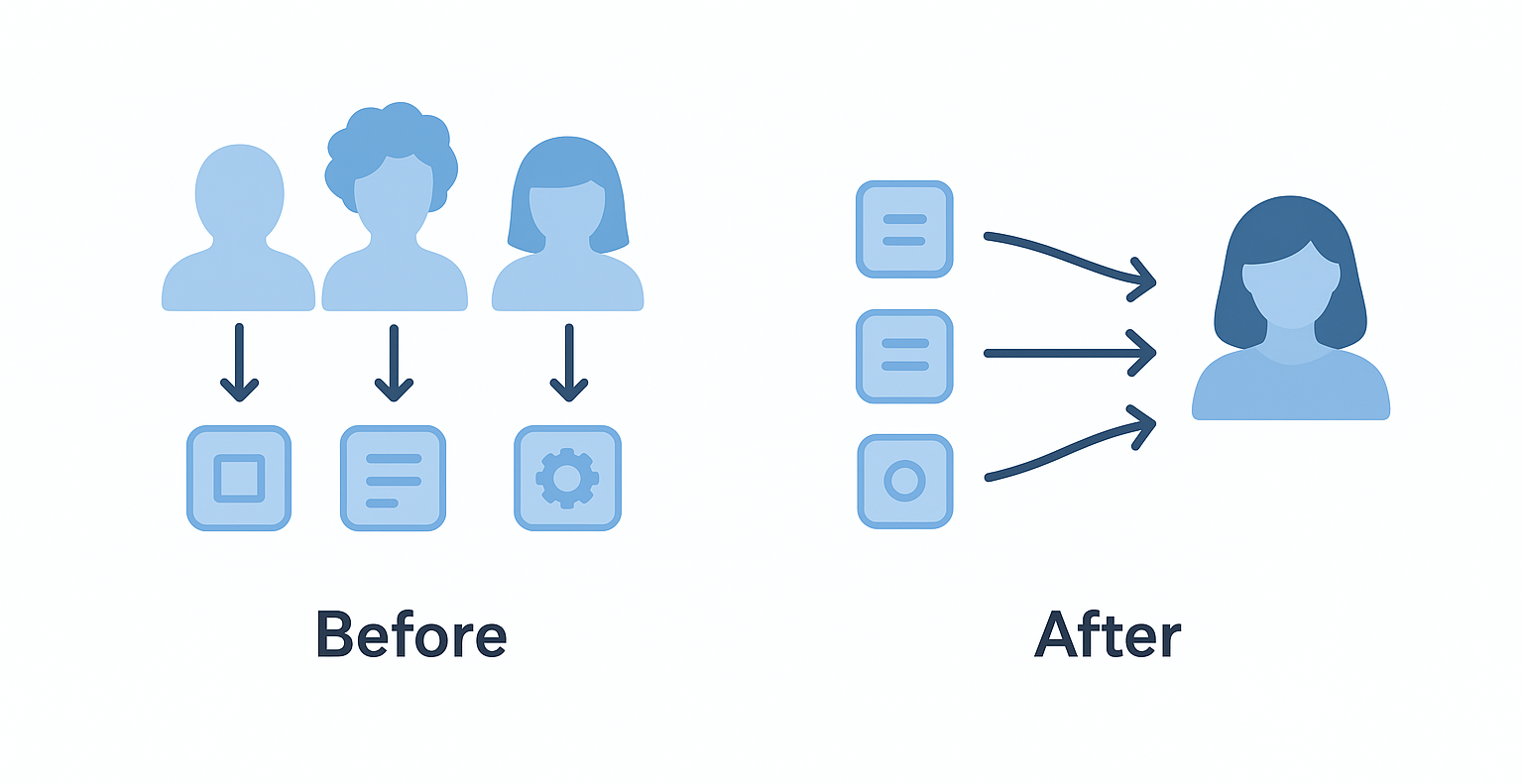
How Startups Can Define Their First Customers with User Personas
When you're early in building a product, it’s easy to assume you know who it’s for. We did. At UserBit, we thought our earliest customers would be UX leads at mid-sized companies. That’s who we had in mind from day one.
But we didn’t create a real persona upfront. We based our roadmap on assumptions until we started looking more closely at actual user behavior. What we found surprised us: it was independent consultants and solo researchers who were getting the most value out of our tools.

Creating that first persona helped us stop guessing and start prioritizing for the right people.
This article is about how you can get that clarity sooner, even before you launch. I’ll explain why creating a strong persona based on actual user behavior is one of the smartest investments an early-stage team can make.
Why early-stage startups need personas
A lot of startups hold off on creating personas until after they launch. That seems logical. You might think, “We don’t have users yet, so what would we base them on? Let’s build first, then figure out who it’s for.”
But that mindset can be risky. In the absence of a defined user, you default to yourself, or to some generic mental model of "the user." That’s when products start to lose coherence. Features get bolted on. Messaging gets watered down. You end up with a product that kind of works for everyone, but doesn’t really work for anyone.
That leads to products that feel scattered. Features don’t connect, and messaging is generic. You waste time fixing things later.
When you don’t have unlimited time or budget, focus becomes your only leverage. A good persona keeps you focused on one real kind of user. Not a vague market. Not an imaginary average person. A real person with real needs you can solve today.
Personas anchor your product decisions in actual user behavior. Even a few user interviews can give you the clarity you need to start. The goal isn’t to predict every edge case. It’s to commit to one kind of user and go deep.

What makes a useful persona
A good persona is memorable but also grounded in real data. It helps the team understand not just who the user is but also how they work and what they care about.
For example, instead of imagining a generic “researcher,” we might define someone like: “Jess, the freelance UX consultant who runs three client projects at once and wants a faster way to synthesize interviews.”
That’s specific, and it helps us make decisions. We can ask, “Would Jess find this useful? Would she have time to use it?”
The goal isn’t to cover every possible use case. You want just a few personas that reflect your best-aligned users — people who already get value from your product or would, if they found it. If you're building a workspace tool for early-stage founders, then your persona shouldn't look like a CIO at a Fortune 100 company. Your real customer might be someone working out of coffee shops, using six tabs to track feedback, and losing steam by the end of the week.
How to start making personas early on
You don’t need a big research team. You don’t need 100 interviews. Start small.
Talk to 5 to 10 people who are close to your target audience. Ask them how they solve the problem today. What’s frustrating about that process? What have they tried that didn’t work? You’ll start to hear recurring themes — workarounds, unmet needs, little quotes that stick with you.
Organize those patterns. Tag them. Look for overlap in behaviors, not just roles. The goal is to spot a type of user who keeps coming up, not just the loudest one. At UserBit, we tag behaviors and segment traits using our own platform. That helps us spot commonalities quickly. But you can start with a spreadsheet if that’s what you have. The important part is seeing what overlaps.
Once you see that, write it down. Give that persona a name and context. Your team should be able to say, “That feature’s for Sam,” and know exactly what that means.
Early on, I recommend focusing on just 2 or 3 personas max. Each one should represent a cluster of users with similar motivations. You don’t need every edge case or potential future market. You just need to understand the core group that’s already leaning in.

How we created our first personas at UserBit
As I mentioned earlier, when we were building the first version of UserBit, I thought our users would be UX researchers at mid-sized companies. It made sense. That’s who we talked to initially and who gave us feedback.
But the first people to actually use and love the product were freelancers and consultants. These were people with no one to delegate to, people who were doing everything themselves (research, analysis, client management) and needed better ways to stay organized.
We didn’t expect that. But once we saw the pattern, we adjusted. We went back through interviews and support chats, tagged common behaviors, and rewrote our first personas.
The result wasn’t a new market strategy. It was product clarity. We started prioritizing features that helped solo users complete projects faster, and we stopped chasing requests that didn’t align with how our core users actually worked.
That’s the value of personas: they help you separate signal from noise.

Keep your persona simple and evolving
Your first personas won’t be perfect. That’s fine. The point isn’t to get it right the first time. The point is to have a shared picture of who you're solving for right now, with the best data you have. You’ll learn more as you grow, and your personas should evolve.
But don’t skip them. In the early days, a focused persona can save you weeks of guessing. It gives you permission to say no. It keeps your team aligned when the next “cool idea” or feature request comes in.
If I could tell my past self one thing, it’d be this: get clear on who you're building for sooner than feels comfortable. That clarity compounds.
Final thoughts
Startups don’t usually fail because they can’t build. They fail because they build for the wrong people, or for no one in particular.
Personas help you stay focused. They help you say no. They help you spot what really matters and ignore the noise.
And if you’re looking for a faster way to analyze research and synthesize personas, that’s exactly why we built UserBit. Whether you’re a solo founder, a consultant, or part of a growing team, it gives you the structure you need to turn raw interviews into clear user insights.
You don’t need a 40-page strategy to get started. Just talk to your users. Look for patterns. Write down what you find. Then build with them in mind.
Everything else gets easier from there. And if you’re ready to create your first personas, Personas by UserBit helps you do it fast — from organizing interview data to turning insights into shareable profiles your team can align around.



